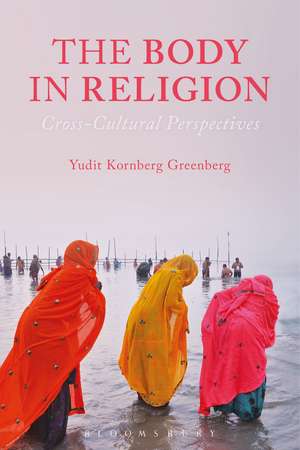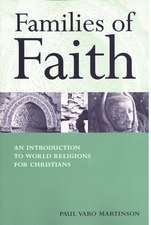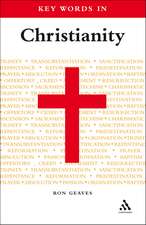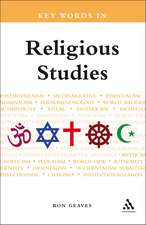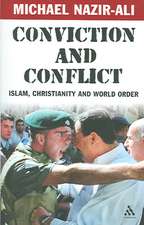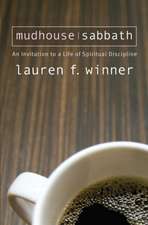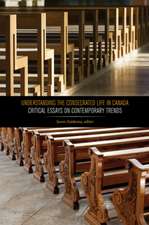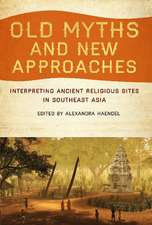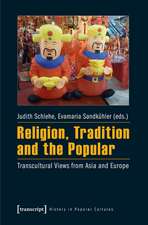The Body in Religion: Cross-Cultural Perspectives
Autor Yudit Kornberg Greenbergen Limba Engleză Paperback – 13 dec 2017
| Toate formatele și edițiile | Preț | Express |
|---|---|---|
| Paperback (1) | 174.51 lei 6-8 săpt. | |
| Bloomsbury Publishing – 13 dec 2017 | 174.51 lei 6-8 săpt. | |
| Hardback (1) | 541.61 lei 6-8 săpt. | |
| Bloomsbury Publishing – 13 dec 2017 | 541.61 lei 6-8 săpt. |
Preț: 174.51 lei
Preț vechi: 212.92 lei
-18% Nou
Puncte Express: 262
Preț estimativ în valută:
33.39€ • 36.39$ • 28.14£
33.39€ • 36.39$ • 28.14£
Carte tipărită la comandă
Livrare economică 23 aprilie-07 mai
Preluare comenzi: 021 569.72.76
Specificații
ISBN-13: 9781472595034
ISBN-10: 1472595033
Pagini: 312
Ilustrații: 66 bw illus
Dimensiuni: 156 x 234 x 20 mm
Greutate: 0.45 kg
Editura: Bloomsbury Publishing
Colecția Bloomsbury Academic
Locul publicării:London, United Kingdom
ISBN-10: 1472595033
Pagini: 312
Ilustrații: 66 bw illus
Dimensiuni: 156 x 234 x 20 mm
Greutate: 0.45 kg
Editura: Bloomsbury Publishing
Colecția Bloomsbury Academic
Locul publicării:London, United Kingdom
Caracteristici
Includes 66 images, and online resources include teacher resources (suggested readings, a syllabus, examination questions, a glossary) and links to primary and secondary resources.
Notă biografică
Yudit Kornberg Greenberg is the Cornell Endowed Chair of Religion and Director of the Jewish Studies Program at Rollins College in Winter Park, Florida, USA. Her publications include works in modern Jewish philosophy as well as the 2 volume Encyclopedia of Love in World Religions.
Cuprins
List of illustrationsPreface and IntroductionPart One: Representing the Divine and the Human Body, Introduction 1. Representation of the Body in Creation Myths2. Representation of the Divine in Text and Art3. Erotic Desire and Divine LovePart Two: Celebrating and Sustaining the Body, Introduction4. Body in Religious Ritual5. Food: Laws and Practices6. Sustaining the Body: Breath, Harmony, Health and HealingPart Three: Disciplining the Body, Introduction7. Purity and Pollution8. Gender and Sexuality9. Marriage and ReproductionPart Four: Modifying, Liberating, and Honoring the Body, Introduction10. Marking and Modifying the Body11. Asceticism: Spiritual Technologies of Detachment12. Death and the AfterlifeBibliographyWeb references Index
Recenzii
Greenberg skillfully draws out the central place of the body in shaping religious and social identities, as well as how various traditions interpret the body as a physical phenomenon and as a site of social and symbolic meaning. Furthermore, the reader is introduced to the problems of essentialism and dualist frameworks that permeate many traditions, especially in terms of asymmetrical hierarchies between mind and body, subject and object, reason and emotion, spirit and matter, transcendence and immanence, and male and female.
Yudith Kornberg Greenberg's The Body in Religion: Cross-cultural Perspectives is a timely and an excellent resource for classroom articulating what is the body providing examples from various cultural and religious traditions including themes of creation, rituals, performances, gender and sexuality, and death and afterlife. The volume presents the centrality of the body and the importance of understanding the body from different multicultural and multi-disciplinary perspectives.
In this wide-ranging study, Yudit Greenberg has brought together an enormous wealth of material into a single volume. Sacrificing neither clarity nor depth, The Body in Religion: Cross-Cultural Perspectives is a gold mine of information and insight. Examining multiple dimensions of how the body is conceptualized and represented in a variety of religious traditions, Greenberg has crafted a work to which scholars will no doubt refer for years to come.
In the last generation, the study of religion has made a material turn that seeks to grasp not just creeds and philosophies but also the embodied ways that religious communities live their teachings. Those looking for an accessible and rich tour of how bodies have been celebrated, disciplined, and modified in Hinduism, Buddhism, Jainism, Sikhism, Judaism, Christianity, Islam, and elsewhere will find an able guide in this book.
The Body in Religion is a masterful comparative discussion of established and evolving ways of knowing the body in traditions across the globe. Accessibly bringing together religious texts and practices as well as recent scholarly analysis in a diversity of fields - from biotechnology to religion studies - it demonstrates that the body is central to the construction of identity, and that lucid understanding of global perspectives is vital today.
Our bodies strive toward sensory pleasure. They enjoy ecstatic bliss. And they must endure pain and suffering. The Body in Religion opens our eyes to the imaginative ways that the world's religions have both celebrated and disciplined such powerful bodily impulses. With masterful prose and vivid illustrations, Yudit Greenberg depicts the sheer variety of body-based religious experience. A delight to read. An invitation to rethink the very nature of religion.
Yudit Greenberg's wide-ranging and ambitious coverage of the attitudes of the major world religions to the body assumes no prior knowledge on the part of the reader, and effects a remarkable synthesis of the complex issues that shelter under this theme. Students and general readers will benefit equally from this approachable text: it throws standard secularized attitudes to bodiliness into new contention as it shows how much difference is made to such issues by religious commitment and ritual performance.
The Body in Religion is remarkably comprehensive and clear; it thus provides the perfect entry into a complex and multifaceted subject, illuminating the interplay between religious, political, and cultural perspectives on bodily issues. Everyone will learn something from this work. The cross-cultural approach along with the questions and activities at the end of each chapter make it ideal for classroom use.
Yudith Kornberg Greenberg's The Body in Religion: Cross-cultural Perspectives is a timely and an excellent resource for classroom articulating what is the body providing examples from various cultural and religious traditions including themes of creation, rituals, performances, gender and sexuality, and death and afterlife. The volume presents the centrality of the body and the importance of understanding the body from different multicultural and multi-disciplinary perspectives.
In this wide-ranging study, Yudit Greenberg has brought together an enormous wealth of material into a single volume. Sacrificing neither clarity nor depth, The Body in Religion: Cross-Cultural Perspectives is a gold mine of information and insight. Examining multiple dimensions of how the body is conceptualized and represented in a variety of religious traditions, Greenberg has crafted a work to which scholars will no doubt refer for years to come.
In the last generation, the study of religion has made a material turn that seeks to grasp not just creeds and philosophies but also the embodied ways that religious communities live their teachings. Those looking for an accessible and rich tour of how bodies have been celebrated, disciplined, and modified in Hinduism, Buddhism, Jainism, Sikhism, Judaism, Christianity, Islam, and elsewhere will find an able guide in this book.
The Body in Religion is a masterful comparative discussion of established and evolving ways of knowing the body in traditions across the globe. Accessibly bringing together religious texts and practices as well as recent scholarly analysis in a diversity of fields - from biotechnology to religion studies - it demonstrates that the body is central to the construction of identity, and that lucid understanding of global perspectives is vital today.
Our bodies strive toward sensory pleasure. They enjoy ecstatic bliss. And they must endure pain and suffering. The Body in Religion opens our eyes to the imaginative ways that the world's religions have both celebrated and disciplined such powerful bodily impulses. With masterful prose and vivid illustrations, Yudit Greenberg depicts the sheer variety of body-based religious experience. A delight to read. An invitation to rethink the very nature of religion.
Yudit Greenberg's wide-ranging and ambitious coverage of the attitudes of the major world religions to the body assumes no prior knowledge on the part of the reader, and effects a remarkable synthesis of the complex issues that shelter under this theme. Students and general readers will benefit equally from this approachable text: it throws standard secularized attitudes to bodiliness into new contention as it shows how much difference is made to such issues by religious commitment and ritual performance.
The Body in Religion is remarkably comprehensive and clear; it thus provides the perfect entry into a complex and multifaceted subject, illuminating the interplay between religious, political, and cultural perspectives on bodily issues. Everyone will learn something from this work. The cross-cultural approach along with the questions and activities at the end of each chapter make it ideal for classroom use.
